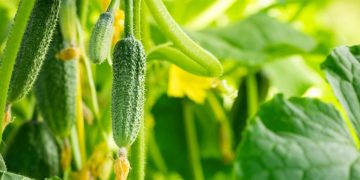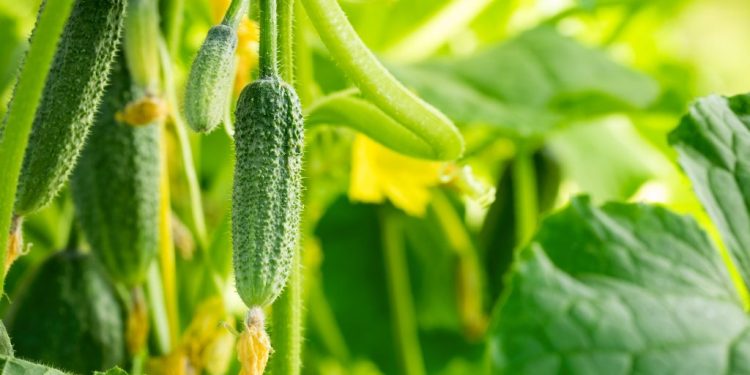Turov Greenhouse Complex near Moscow began growing new varieties of cucumbers
Anatoly Minkin, Dmitry Stepanishchev
Immediately, 10 new varieties of cucumbers from the Netherlands began to grow in the “Turov greenhouse complex” of the urban district of Serpukhov. About how they differ from the usual vegetables, said the general director of the complex Alexander Shakovets.
They are trying to grow new varieties of cucumbers for the first time. For a period of three or more months, the plant reaches a height of nine meters, so they require a special approach on the part of workers.
“The Dutch, trying to promote new varieties, asked us to grow 10 new varieties for the exhibition, which they will promote on the Russian market in the future. We did the same for them and for ourselves too. Let’s see how interesting it is. People like it, but in order for the product to become mass-produced, the market needs to be conquered,” said Alexander Shakovets.
One of the varieties of cucumbers was called dessert and cocktail, and all because of the unusual appearance. Outwardly, they look like zucchini with a very thin skin. They do not taste sweet, but a little tart and very tender.
Another variety looks like a claw. The director of the complex called them “crocodiles”. Outwardly, they can scare the buyer, but it is enough to try them once to appreciate the unusual taste.
Among other varieties there are cucumbers with a skin, like that of a watermelon, thick and striped. But they have a shelf life of less than two weeks. There are small vegetables similar to grapes, but with a very delicate taste.
“In single copies, cucumbers are not a problem to produce. It will not be so unprofitable, but in order for this to be a direct business, it is necessary to form a consumer market, to convince people that it is tasty, ”said Alexander Shakovets.
Immediately, 10 new varieties of cucumbers from the Netherlands began to grow in the “Turov greenhouse complex” of the urban district of Serpukhov. About how they differ from the usual vegetables, said the general director of the complex Alexander Shakovets.
They are trying to grow new varieties of cucumbers for the first time. For a period of three or more months, the plant reaches a height of nine meters, so they require a special approach on the part of workers.
“The Dutch, trying to promote new varieties, asked us to grow 10 new varieties for the exhibition, which they will promote on the Russian market in the future. We did the same for them and for ourselves too. Let’s see how interesting it is. People like it, but in order for the product to become mass-produced, the market needs to be conquered,” said Alexander Shakovets.
One of the varieties of cucumbers was called dessert and cocktail, and all because of the unusual appearance. Outwardly, they look like zucchini with a very thin skin. They do not taste sweet, but a little tart and very tender.
Another variety looks like a claw. The director of the complex called them “crocodiles”. Outwardly, they can scare the buyer, but it is enough to try them once to appreciate the unusual taste.
Among other varieties there are cucumbers with a skin, like that of a watermelon, thick and striped. But they have a shelf life of less than two weeks. There are small vegetables similar to grapes, but with a very delicate taste.
“In single copies, cucumbers are not a problem to produce. It will not be so unprofitable, but in order for this to be a direct business, it is necessary to form a consumer market, to convince people that it is tasty, ”said Alexander Shakovets.
This can take from one to three years. The volumes of the greenhouse complex are small, so they will start promoting the goods through markets and small shops. The new varieties have already been evaluated by specialists from different regions, but the Moscow region farmers were the first to decide on the experiment.
years. The volumes of the greenhouse complex are small, so they will start promoting the goods through markets and small shops. The new varieties have already been evaluated by specialists from different regions, but the Moscow region farmers were the first to decide on the experiment.
































